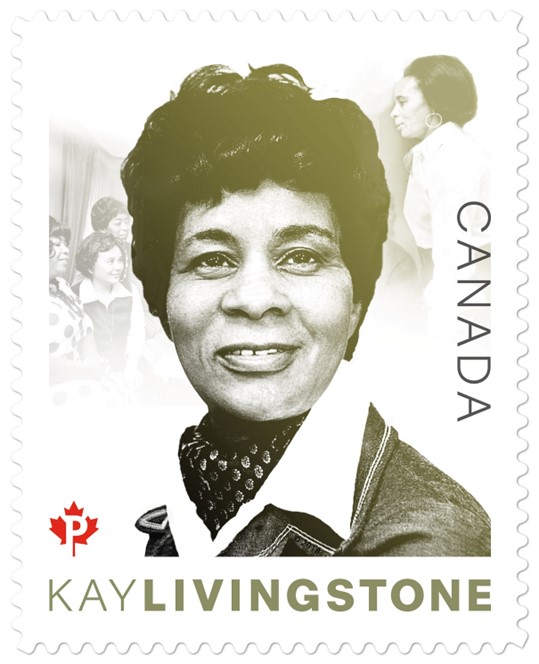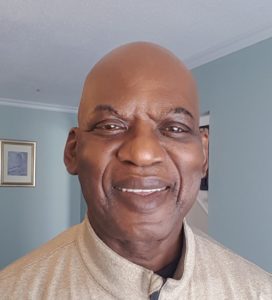
“Visible Minorities” and Employment Equity – “Kathleen (Kay) Livingstone was a trailblazer in community activism
Tuesday 17 December 2024
by Dave Tulloch
“Kathleen (Kay) Livingstone (née Jenkins), organizer and activist, broadcaster, actor (born 13 October 1919 in London, ON; died 25 July 1975). Kay Livingstone founded the Canadian Negro Women’s Association in 1951 and organized the first National Congress of Black Women in 1973.”
Livingstone devoted much of her life and energy to social activism. She worked tirelessly to foster a national dialogue around the social issues related to Blacks in Canada, with a specific focus on Black women. This effort drove Livingstone to coin the term “Visible minorities” in 1975. Since much has been written about Kay Livingstone in this blackottawascene.com publication, this article focuses on her legacy relating to the Visible Minorities term she introduced.
Kay Livingstone changed the lexicon that referred to women of color as either “Black Women” or “Negro Women”. She replaced it with the term “Visible Minorities” with the intent it would be used to address Black-specific issues. This has had a profound effect on Canadian society. Since the mid-1980s Canada has been defining a broad demographic segment of its population as Visible Minorities, and Canada is the only country that uses this demographic segmentation term. In 2007 the UN warned Canada that the term “’visible minorities” may itself be discriminatory. But by this time, it was not just embedded in Canada’s official documents it was seared into the minds of Canadians.
In 1983 the Hon. Lloyd Axworthy then Minister of Employment and Immigration in the Liberal Government of Pierre Trudeau, commissioned Justice Rosalie Abella to investigate and report on the status of employment within the non-white population in Canada. And in 1984 Justice Abdella issued the “Abella Report on Employment Equity” that coopted the term “Visible Minorities” to define the demographic that includes all non-white, and non-native (Aboriginal) persons within Canada. On the first page, “Terms of Reference”, the term “Visible Minorities” appears twice.
The Federal Government adopted the Commission’s recommendations making it the foundation of the Employment Equity Act in 1986. “This landmark legislation aimed to address employment disparities and promote diversity and inclusion in the workplace. The act required federal employers to take affirmative action to increase the representation of designated groups.”
We are now in 2025, some 40 years later, and at this time Canada’s Federal Government is in court defending itself against the exact practices that its own Employment Equity Law was created to prevent. The law stipulates that “Employers should be monitored not only for improvements in the participation rates by group but also for improvements in distribution throughout occupational classifications and pay levels, by designated group. The question is not only how many more of those who were injured by systemic discrimination are working, but whether they are beginning to occupy places they had not previously occupied.”
But a Black Employees Class Action lawsuit is “seeking long-term solutions to permanently address systemic racism and discrimination in the Public Service of Canada.” The plaintiffs, a group of Black Federal employees allege that “Systemic barriers to equality have shown themselves to be particularly pernicious in the hiring and promotion practices of the Public Service and have resulted in manifest underrepresentation of Black employees, particularly at the upper levels of the Public Service. These have resulted in the insidious practice of Black employee exclusion.”
The irony is that by grouping Blacks with other racial groups the ability to focus on Black specific issues is diminished and in effect Blacks became invisible. A further irony is that Kay Livingstone worked for the Dominion Bureau of Statistics, now Statistics Canada which uses “Visible Minorities” to define the general demographic group that includes Blacks. However, by embedding Canada’s black population in this larger non-white demographic segment, it is difficult to determine the effect of government policies on Canada’s black population. This is the opposite of the effect that Livingstone intended when she introduced the term.
It is fair to say that the Employment Equity Act of 1986 was well-intended, but the law is toothless. “While monetary penalties may be issued to deter non-compliance, they cannot be applied punitively. Designated violations under the Act are not offences, and the Criminal Code does not apply to them.” Compliance monitoring is based on Employers’ reporting and non-compliance penalties range from $10, 000 to $50,000. For large organizations, this is a non-deterrent. And since the law also allows Employers to report on their compliance, essentially asking them to police themselves, it is not surprising that the number of violation cases is minuscule.
The Employment Equity Legislation of 1986 may have benefited the general demographic of visible minorities within Canada, and the “Employment Equity Act: Annual Report 2022“paints a glowing picture to support this assertion. However, the Black sub-segment of Canada’s of Canada’s workforce is not singled out in this report, and this is precisely the group that continues to encounter social and organizational barriers in their efforts to achieve equitable treatment in the workplace and Canadian Society as a whole.

Dave Tulloch was born in Jamaica. He immigrated to Canada in 1970 to pursue post-secondary education. He earned a diploma in electronics engineering technology from Algonquin College, a Bachelor of Admin and Bachelor of Commerce (Hon) from the University of Ottawa, and a Master of Business Administration from Concordia University. He has an extensive career in information technology and in IT consulting with Systemhouse, KPMG, and Oracle Corporation where he retired as a director. Dave taught IT and business courses at CEGEP (Hull) and tutored at the Wake Tech College in North Carolina. He wrote articles for the Ottawa Spectrum publication that focused on Ottawa’s Visible Minorities community and has written a book documenting the life stories of early Caribbean Immigrants to Ottawa, scheduled for publication later this year. He can be contacted via email: [email protected]

This is a very impressive article by Author David Tulloch which is not only well/written and thoroughly researched, but also quite illuminating in the manner it sheds light on the origin and continuing evolution of the term “Visible Minorities”. It is particularly insightful and ironic how the demographics, blacks, whose plight was meant to be addressed by Kay Livingstone visionary effort in promoting the very apt and prescient term have themselves been pushed towards a social state of being invisible. Despite the gains of the past years, far too many blacks are still suffering from discrimination in Canada. What we are seeing in real time is that the system which is now loudly proclaiming gains made in hiring a few black executives is drilling down against blacks in the lower cadres, limiting their opportunities and doing it away from the glare of public scrutiny. It is proverbial: the system is giving to Peter with one hand, and robbing Paul blind with the other. It is hoped that this article, and the life of the subject, Kay Livingstone will touch hearts while educating the reader.
Well written chronicles of some of the major events and road blocks that faced Canada blacks.